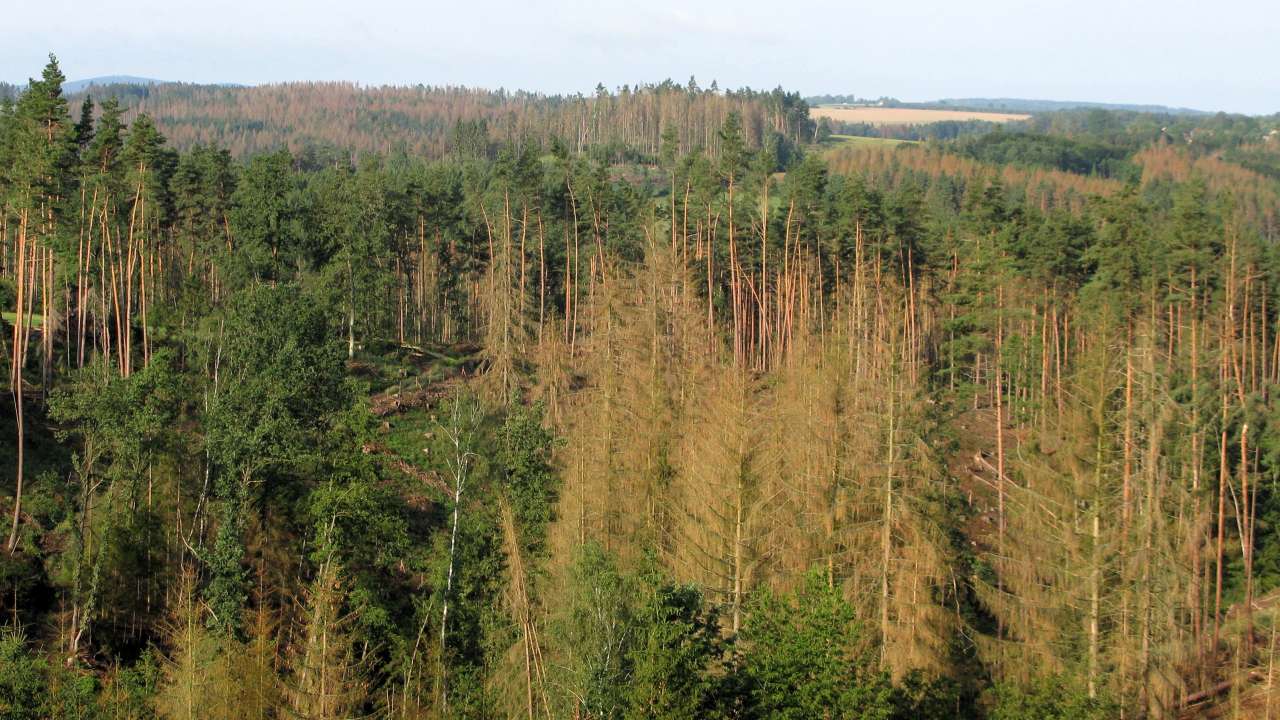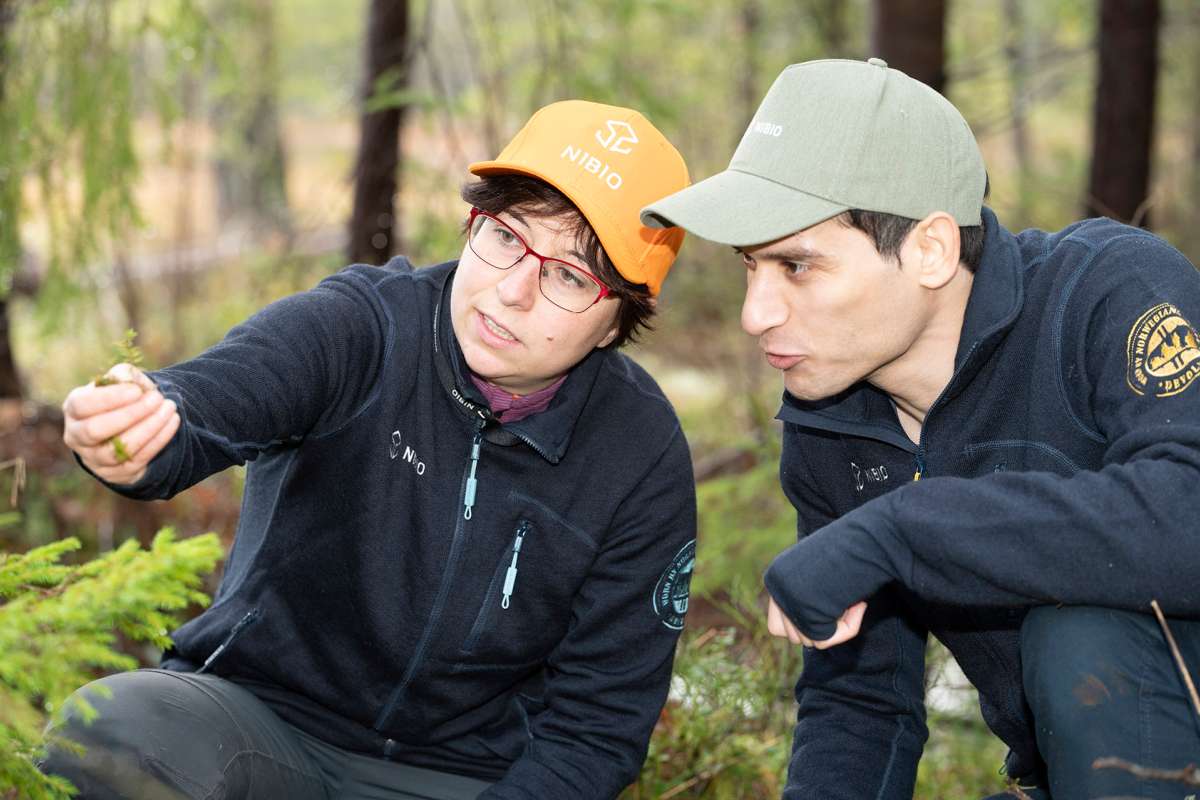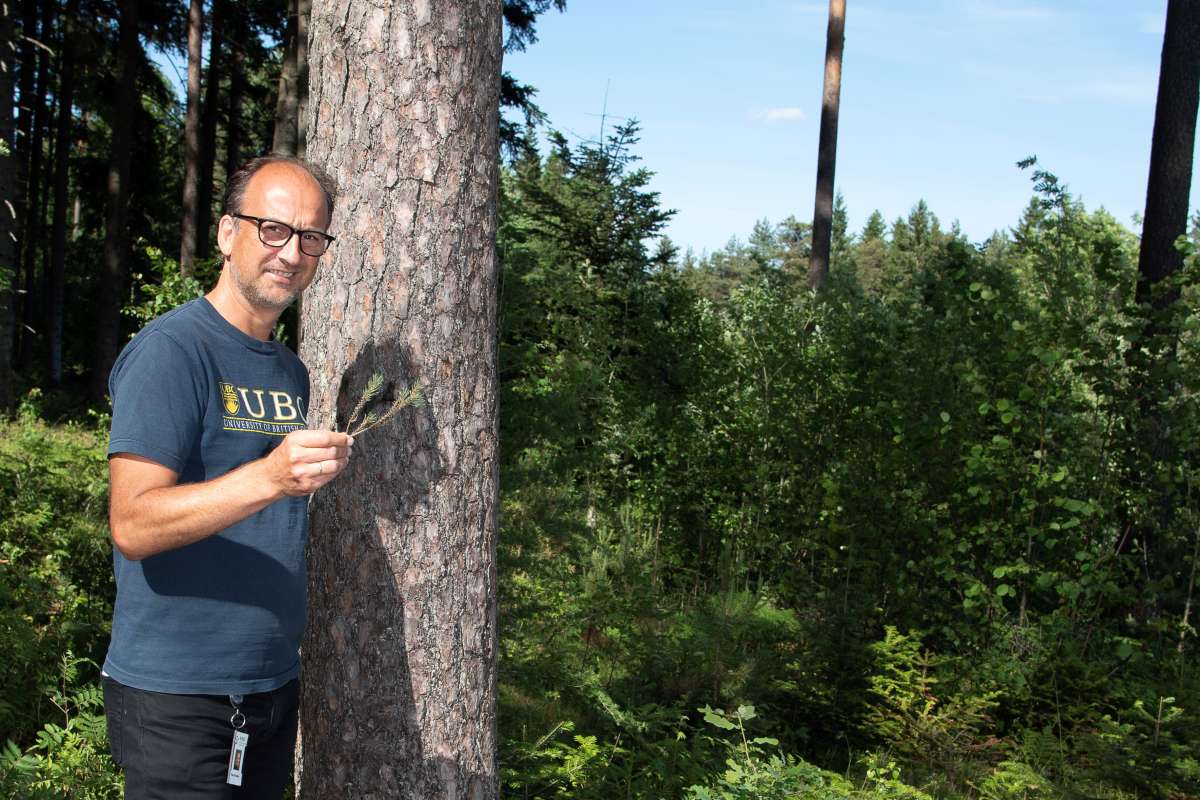Tree mortality from insects is rising in Europe

The spruce bark beetle has killed several hundred million spruce trees in Sweden and Central Europe over the past years. Here is an example from the Bohemian-Moravian Highlands in southern Czechia. Photo: Jan Liška, FGMRI
Across Europe, trees are increasingly dying from insect infestations. Prospects are better for broadleaved trees than conifers. Heat and drought intensify the problem.
Tree-feeding insects are affecting Europe’s forests increasingly but in uneven ways, according to an international study published in Global Change Biology.
An international team from 17 European countries, including NIBIO in Norway, reports that wood-boring insects are causing increasing damage to multiple conifer species, while defoliation caused by caterpillars of different moth species has been declining in recent years. Across temperate and boreal Europe, insect disturbance is consistently higher in warmer and drier regions, indicating the risk of large, sudden impacts as climate extremes intensify.
“Our results show a clear signal: conifer-dominated forests are increasingly vulnerable to wood- and bark-boring insects, in particular the spruce bark beetle Ips typhographus, while broadleaved tree species are experiencing decreasing levels of damage from a more diverse group of insects,” says Tomáš Hlásny, the study’s lead author from the Czech University of Life Sciences Prague.
“These findings are important, providing guidance for forest management, tree species choice, climate change adaptation, and planning of future timber markets”.


The situation in Norway
“Norwegian forests are still experiencing relatively little tree mortality, but national forest inventory data shows a worrying increasing trend. Southern Sweden recently suffered unprecedented mortality from the spruce bark beetle and researchers fear this may be an indication of what is to come in Norway”, says Research Professor Paal Krokene at Norwegian Institute of Bioeconomy Research (NIBIO).
Why it matters
The findings support policies that shift forest management toward more climate-resilient tree species compositions, with a dominance of broadleaved species, alongside stronger, interoperable monitoring of forest disturbance and data sharing across countries.
“We need adaptation strategies that reflect diverging disturbance trends and uneven exposure levels across Europe’s forests,” Hlásny says.
“This requires effort in coordinated forest risk monitoring, harmonized data collection and sharing, and guidance that can be acted upon by managers and inform markets.”
How the study was conducted
Researchers compiled annual disturbance records from 15 European countries for more than two decades (2000–2022). The dataset represents 1,361 regional time series for 50 insect species. The team analysed damage trends by insect feeding guild (borers vs. defoliators), host tree species group (conifers vs. broadleaves), and geographic/climatic gradients. The work also generated a novel harmonized dataset of insect damage, designed to complement existing monitoring and support future research.
Contacts

Contacts





